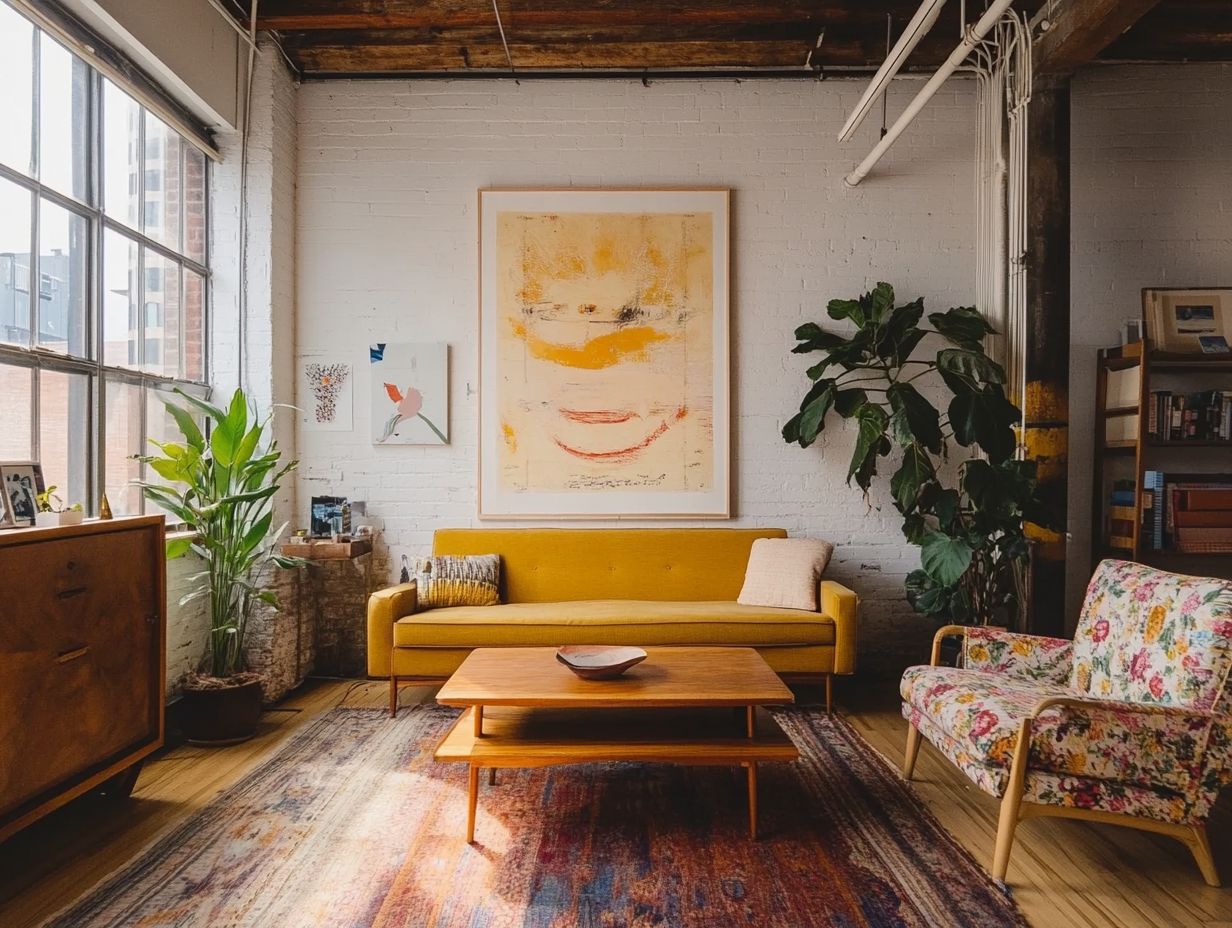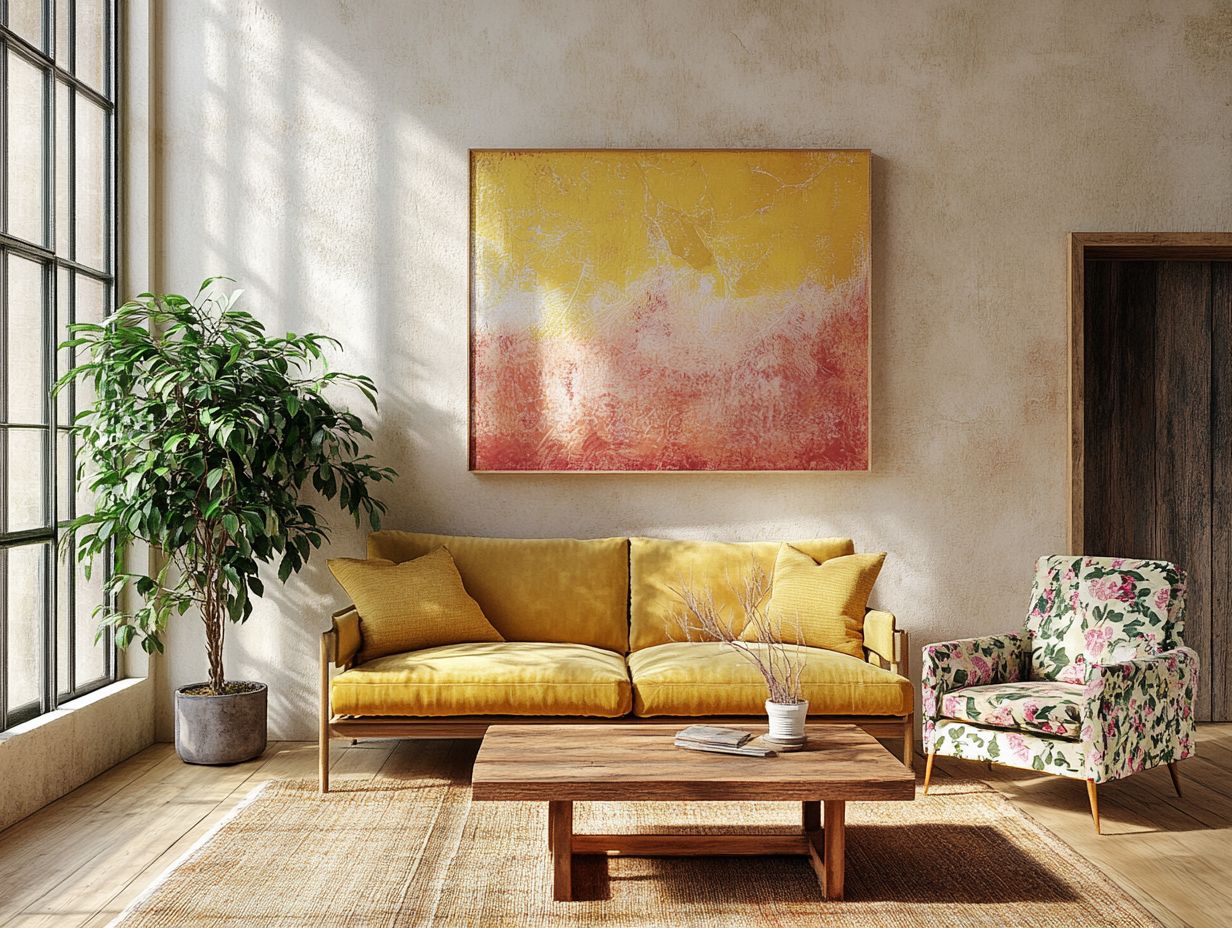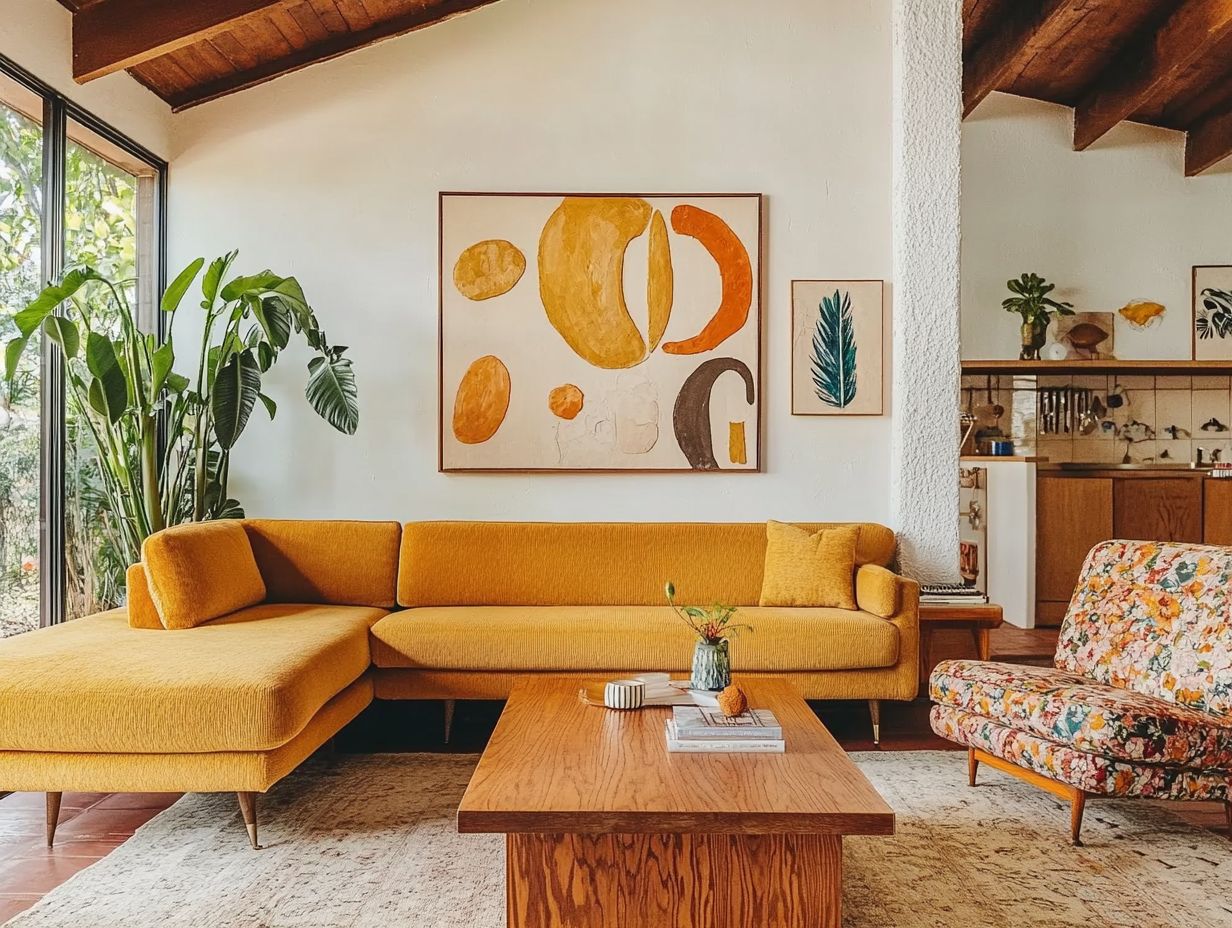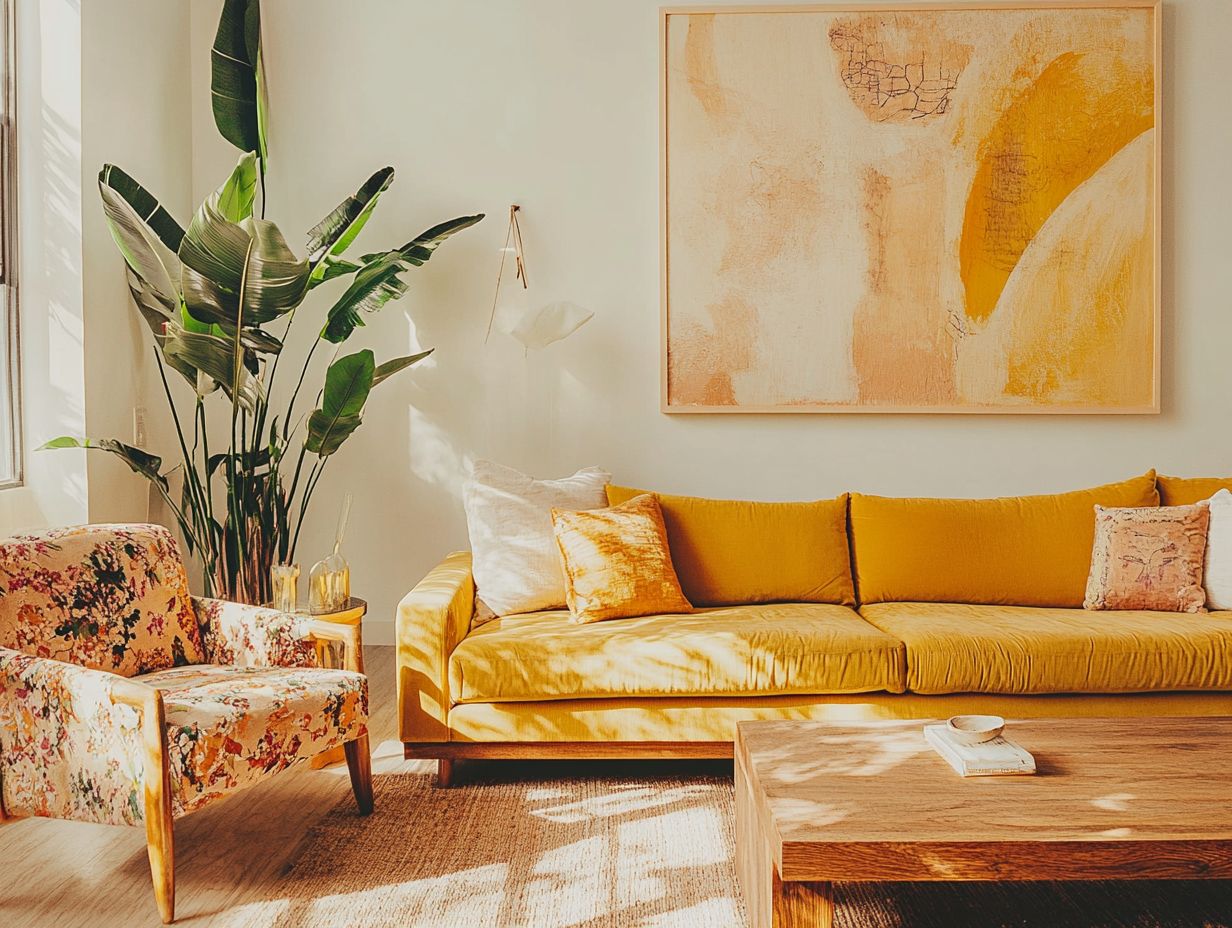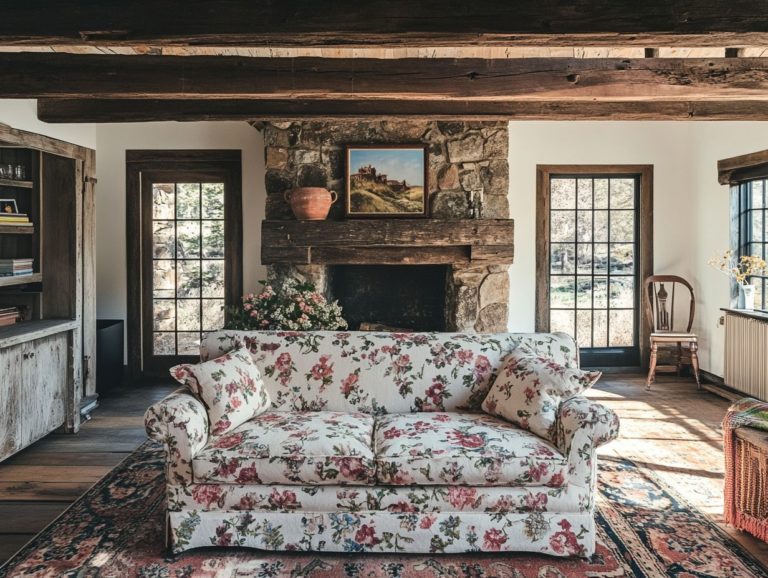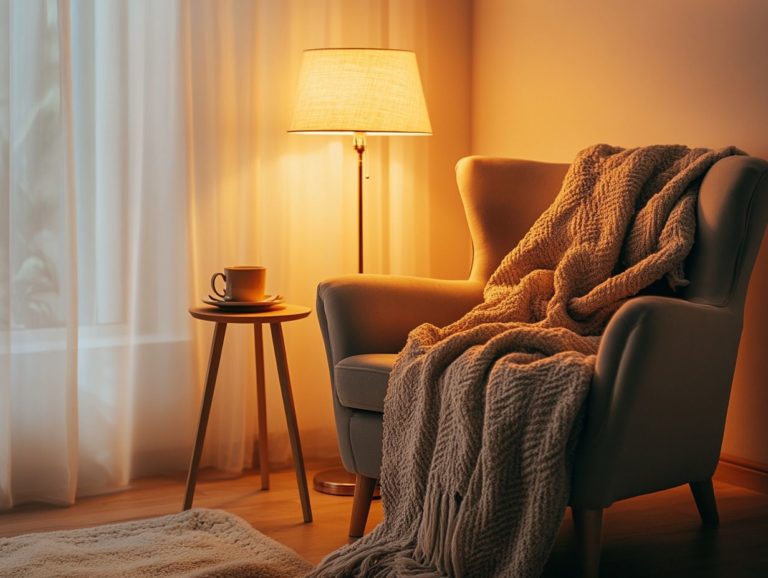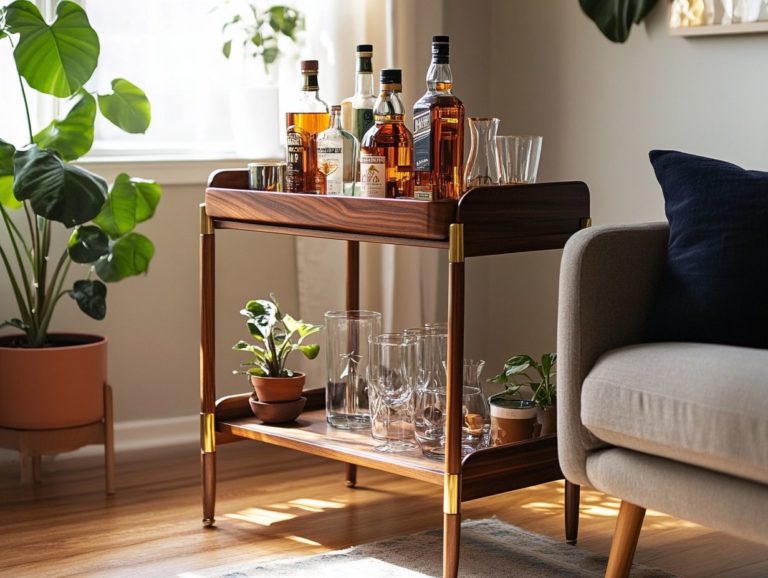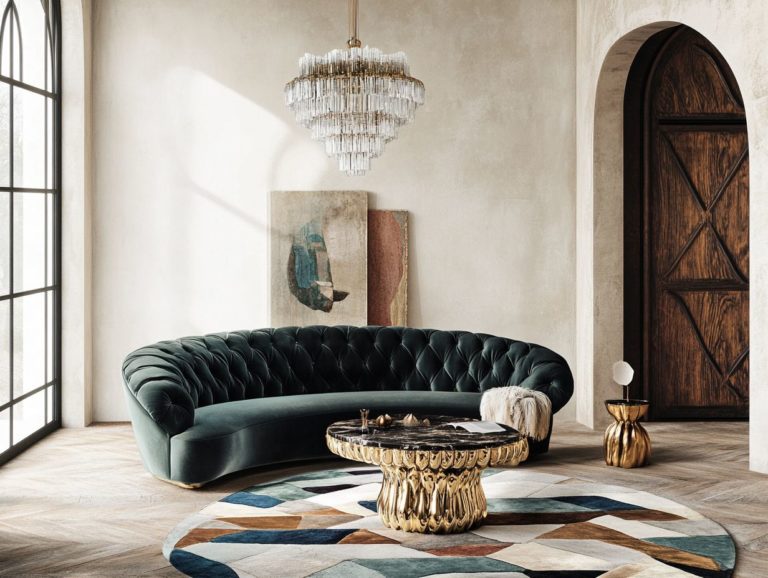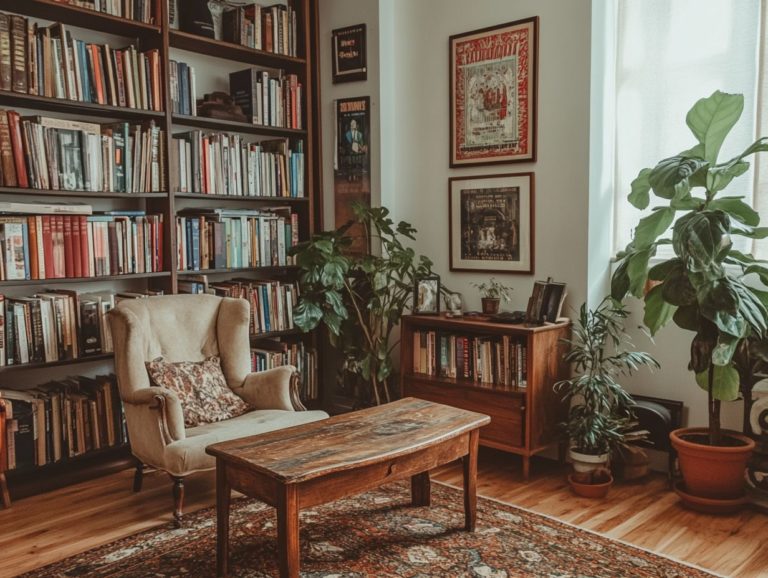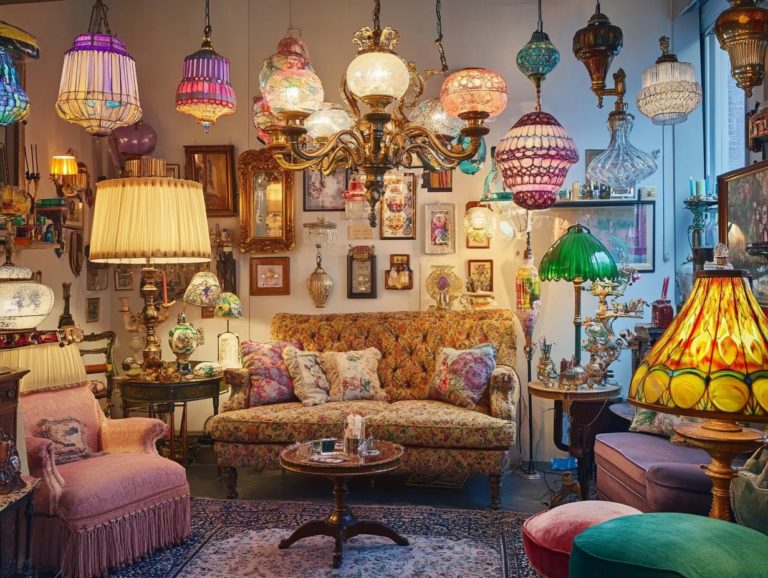The Best Vintage Furniture for Open Floor Plans
Open floor plans offer a seamless flow between living spaces, creating an inviting environment for both relaxation and entertaining.
To elevate this aesthetic, vintage furniture can bring character and warmth to modern layouts.
This article explores the benefits of incorporating vintage pieces, guides you in selecting the right styles, and provides tips for mixing and matching to create a cohesive look.
Discover how to preserve the charm of vintage furniture while enhancing your open space’s functionality.
Contents
- Key Takeaways:
- Benefits of Vintage Furniture in Open Floor Plans
- Choosing the Right Vintage Furniture for Your Space
- Popular Vintage Furniture Styles for Open Floor Plans
- Mixing and Matching Vintage Furniture in an Open Floor Plan
- Caring for and Maintaining Vintage Furniture
- Frequently Asked Questions
- Which vintage furniture will make your open floor plan shine?
- How can I incorporate vintage furniture into my open floor plan?
- What are some key features to look for in vintage furniture for open floor plans?
- Are there any vintage furniture pieces that are not suitable for open floor plans?
- How can I ensure my vintage furniture fits in with my open floor plan?
- Where can I find the best vintage furniture for my open floor plan?
Key Takeaways:
- Vintage furniture adds character and functionality to open floor plans, enhancing the overall aesthetic and vibe of the space.
- When choosing vintage furniture, consider size, material, and style to create a balanced look.
- Proper care of vintage furniture preserves its beauty for years to come in your home.
Defining Open Floor Plans and Vintage Furniture
Open floor plans represent a modern home layout characterized by minimal interior walls, resulting in spacious, multifunctional areas that seamlessly integrate living, dining, and kitchen spaces.
This layout enhances natural pathways and traffic flow, making it particularly suitable for modern indoor living.
Incorporating vintage furniture into these areas allows homeowners to infuse unique character and warmth into their homes.
This enriches the overall aesthetic while providing practical solutions for furniture arrangement.
The combination of an open living area with antique furnishings fosters a cozy atmosphere conducive to conversation.
It also showcases visual symmetry through thoughtful layout.
The versatility of open floor plans encourages creativity in home decor.
This enables the integration of various design elements without overwhelming the space.
As homeowners consider furniture arrangement, they often find that vintage pieces serve functional purposes and act as conversation starters.
Imagine your space filled with vibrant stories.
A mid-century coffee table or a classic armchair can serve as focal points.
These timeless pieces harmonize with modern design while introducing a touch of nostalgia.
When strategically placed, they help delineate different zones within the open layout.
This ensures that even in expansive, fluid spaces, a sense of intimacy and organization is maintained.
Benefits of Vintage Furniture in Open Floor Plans
Incorporating vintage furniture into open floor plans presents numerous advantages.
This approach enhances both the aesthetic appeal and functionality of living spaces.
It facilitates a unique blend of styles and a cohesive design strategy that promotes the usability of each room.
Vintage pieces can act as focal points, infusing character and warmth into the environment.
Their distinctive textures and layers contribute to a cozy atmosphere conducive to conversation and relaxation.
Vintage items provide great design flexibility.
This enables homeowners to tailor their furniture collections to seamlessly accommodate various room functions.
Transform your home into a cozy personal haven today!
Transform Your Open Floor Plan!
Enhancing the aesthetic and functionality of an open floor plan requires careful furniture arrangement. Focus on creating a conversation area that encourages interaction while maintaining a visually appealing ambiance. By positioning vintage furniture, such as an accent chair or a thoughtfully placed area rug, homeowners can cultivate a welcoming environment that invites guests to gather and engage.
Thoughtful furniture selection can transform a multifunctional space, enabling it to serve various purposes without compromising a balanced look, a crucial element in effective living room design.
Use large cushions and throws to soften hard surfaces and create inviting seating arrangements. Employing movable furniture, like ottomans or lightweight side tables, allows for flexible configurations that can adapt to different occasions.
Incorporating elements such as plants or decorative partitions can also enrich visual interest while subtly defining conversation areas, ensuring the space remains both functional and aesthetically pleasing—vital for successful interior design.
Ultimately, mixing style and function can improve your open floor plan, making it an ideal setting for both relaxation and social interaction.
Choosing the Right Vintage Furniture for Your Space
Selecting the appropriate vintage furniture for a given space is pivotal, requiring a comprehensive understanding of the room’s function. Various pieces effectively address specific spatial challenges while aligning with contemporary design trends that focus on space utilization and furniture customization.
Vintage furniture offers a diverse array of options that can enhance home decor, adding distinctive character to interior design. Whether seeking modular furniture to optimize space or antique pieces reflecting personal style, informed selections are essential for achieving a cohesive and functional environment.
Key Considerations for Vintage Furniture
- Size: Oversized pieces can overwhelm a small space, while items that are too small may create a sense of imbalance.
- Style: The furniture’s style should align with the room’s decor, fostering a harmonious atmosphere. Considerations might include mid-century modern or rustic farmhouse aesthetics.
- Intended Use: Understand how the furniture interacts with existing décor to maintain visual symmetry and enhance overall aesthetics.
Prospective buyers should explore customization options, such as upholstery fabrics and finishes. These can transform a vintage piece to ensure it fits seamlessly within the existing décor while meeting the functional requirements of the household, especially in an open floor plan.
By considering these factors, homeowners can curate spaces that are both stylish and functional, reflecting their personal taste while enhancing the usability of each room.
Popular Vintage Furniture Styles for Open Floor Plans
Several popular vintage furniture styles, including mid-century modern and industrial, can significantly enhance open floor plans, each presenting distinct characteristics that contribute to the overall aesthetic and functionality of the space.
Mid-Century Modern furniture, characterized by clean lines and organic forms, integrates seamlessly into contemporary designs. In contrast, Industrial style introduces raw materials and a rugged charm, embodying the essence of urban living, often serving as a conversation starter.
Bohemian style, with its vibrant colors and eclectic patterns, fosters a cozy atmosphere that reflects individualism within the furniture collection, further enhancing overall design flexibility.
Mid-Century Modern
Mid-Century Modern design is a timeless aesthetic that prioritizes simplicity, functionality, and organic shapes. This makes it a favored choice for vintage furniture in open floor plans. It is characterized by elegant lines and a commitment to minimalism. This style complements contemporary decor while instilling warmth, fostering a cozy atmosphere.
Vintage pieces, such as the iconic Eames lounge chair, serve as striking focal points. They elevate both the visual appeal and comfort of the space, often becoming conversation starters.
Beyond the Eames lounge chair, other notable elements include sleek sideboards and sculptural coffee tables. These enhance the overall coherence of an open layout. These furniture selections are not only visually appealing but also promote social interaction, creating inviting areas conducive to gatherings.
Vibrant colors and graphic patterns found in textiles from this era add character to any room. This results in a harmonious blend of style and practicality, ideal for enhancing visual interest.
Embracing these design trends can transform an uninspiring environment into a stylish haven that celebrates both vintage charm and modern living. This creates a balanced atmosphere for all activities.
Industrial
The industrial style is characterized by raw materials, exposed structures, and a practical design. It is an appropriate choice for vintage furniture in open floor plans, particularly in urban living environments. This design ethos often reflects the charm of repurposed factories and warehouses.
Furnishings feature aged woods, weathered metals, and concrete finishes, which contribute to a sense of authenticity. These materials not only establish a connection to industrial heritage but also offer exceptional durability, ideal for the dynamic lifestyle of city residents.
For instance, a reclaimed wood dining table paired with metal chairs can serve as an impressive centerpiece, effectively delineating dining areas within spacious configurations.
The versatility of these elements allows for creative layering of texture and color, enhancing the overall aesthetic while maintaining a streamlined, open atmosphere.
Bohemian
Bohemian style is characterized by vibrant colors, eclectic patterns, and a relaxed atmosphere. This makes it a highly suitable choice for incorporating vintage furniture within open floor plans. This style promotes the use of layered textiles, unique accessories, and unconventional furniture arrangements.
By integrating vintage elements such as a colorful area rug or an antique accent chair, homeowners can effectively convey their individuality while enhancing the overall aesthetic of their space.
The Bohemian aesthetic thrives on a diverse mix of textures and materials, enriching its visual appeal. Bold prints on cushions, natural fibers in throws, and reclaimed wood accents can seamlessly combine vintage and contemporary styles.
This distinctive fusion invites warmth and cultivates an inviting atmosphere where creativity can flourish. Unexpected bursts of color, complemented by subtle earth tones, allow the unique features of each vintage piece to stand out.
This promotes a sense of harmony and flow throughout the open floor plan. Ultimately, this style serves as a canvas for personal expression, ensuring that every space feels lived-in and cherished.
Mixing and Matching Vintage Furniture in an Open Floor Plan
Integrating vintage furniture within an open floor plan can result in a cohesive aesthetic that reflects individual style and creativity. Careful consideration should be given to design trends and furniture customization.
By thoughtfully combining various periods, styles, and textures, homeowners have the opportunity to create a layered visual appeal that adds depth and interest to their living spaces. This approach facilitates a dynamic visual experience while maintaining harmony through the use of complementary colors and shapes.
Don’t miss the chance to create a unique living space that reflects your style!
Tips for Creating a Cohesive Look
Creating a cohesive aesthetic with vintage furniture in an open floor plan requires a careful choice of items that harmonize through a consistent color palette and complementary textures. By focusing on a unified design vision, homeowners can seamlessly integrate various vintage items while maintaining an overall balanced aesthetic.
Incorporating elements like a vintage dining table with matching accent chairs can establish focal points that enhance both functionality and design cohesion.
To achieve this harmonious blending, it is essential to select a limited color palette that connects the various rooms. This facilitates a natural visual flow from one area to another. Mixing textures—like matte finishes on vintage wooden pieces with the smoothness of retro textiles—adds depth and interest to the design. Decorative accents like vintage artwork or unique light fixtures reinforce focal points and reflect personal style.
When strategically placed, these elements not only complement the vintage furniture but also enhance the open layout, resulting in a space that is both cohesive and inviting.
Caring for and Maintaining Vintage Furniture
Caring for and maintaining vintage furniture is crucial for preserving its beauty and quality. Regular cleaning and maintenance techniques can prevent deterioration, allowing vintage items to remain focal points within an open floor plan.
Understanding the specific materials and finishes in your furniture selection will help you apply the correct care methods that align with contemporary design trends.
Keep Your Vintage Treasures Shining with These Simple Tips!
Preserving the beauty and quality of vintage furniture requires regular maintenance techniques and an understanding of various materials. Proper cleaning methods—like using gentle products for wood or fabric—are essential for maintaining the integrity of antique pieces and preventing wear and tear. Regularly inspecting for damage or deterioration allows for timely repairs, ensuring that vintage furniture remains a valued component of your home.
Dust surfaces with a soft cloth to prevent scratching and grime accumulation. Additionally, specialized polishes or oils can nourish wooden finishes, enhancing their luster. For upholstered items, periodic vacuuming removes dust and allergens, keeping the fabric fresh. Avoid placing vintage pieces in direct sunlight to prevent fading and warping.
By understanding these specific techniques tailored to materials—whether wood, leather, or textiles—you can enhance the aesthetic appeal of your cherished collections and significantly extend their functional lifespan. This ensures that future generations can appreciate their timeless beauty.
Frequently Asked Questions
Which vintage furniture will make your open floor plan shine?
The best type of vintage furniture for open floor plans is typically mid-century modern pieces. These have clean lines and open designs that complement the layout of the space.
How can I incorporate vintage furniture into my open floor plan?
Mixing and matching different eras and styles is a great way to incorporate vintage furniture into an open floor plan. This approach creates an eclectic and unique look while still maintaining a cohesive design.
What are some key features to look for in vintage furniture for open floor plans?
Key features to look for include functional and versatile pieces, like modular shelving units or multipurpose tables. Choose furniture with clean lines and open designs to enhance the flow of the space.
Are there any vintage furniture pieces that are not suitable for open floor plans?
Most vintage furniture works well in open floor plans. However, bulky items might overwhelm smaller spaces, and ornate pieces could clash with a simple design.
How can I ensure my vintage furniture fits in with my open floor plan?
Choose vintage pieces with colors and finishes that match your other furniture. You can also use accessories like throw pillows or rugs to create a cohesive look.
Where can I find the best vintage furniture for my open floor plan?
Look for vintage furniture at antique stores, thrift shops, and online marketplaces like Etsy or Chairish. Local vintage shops or flea markets often have unique and affordable finds!

